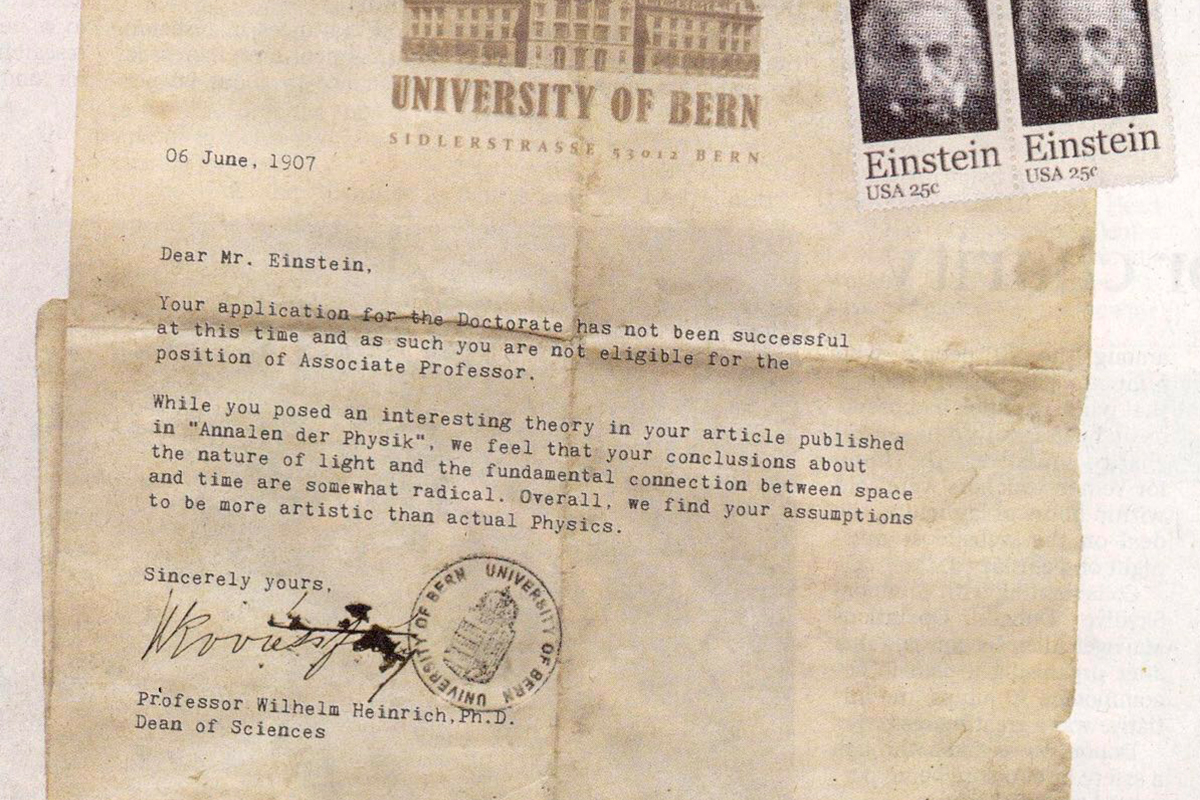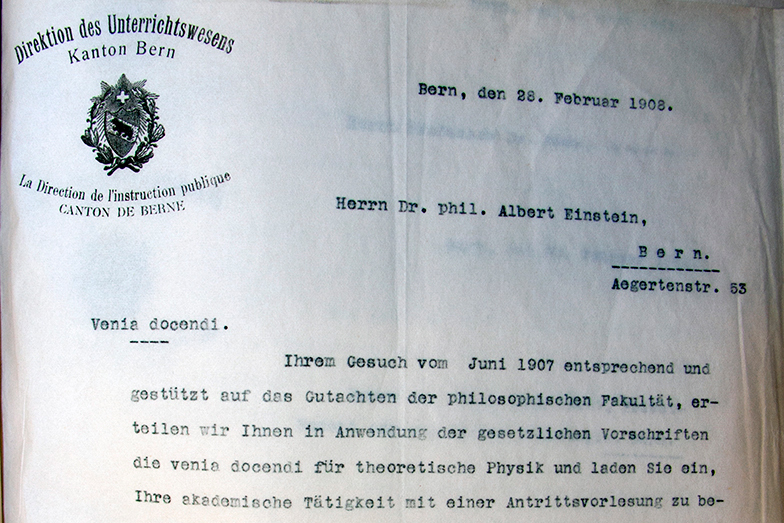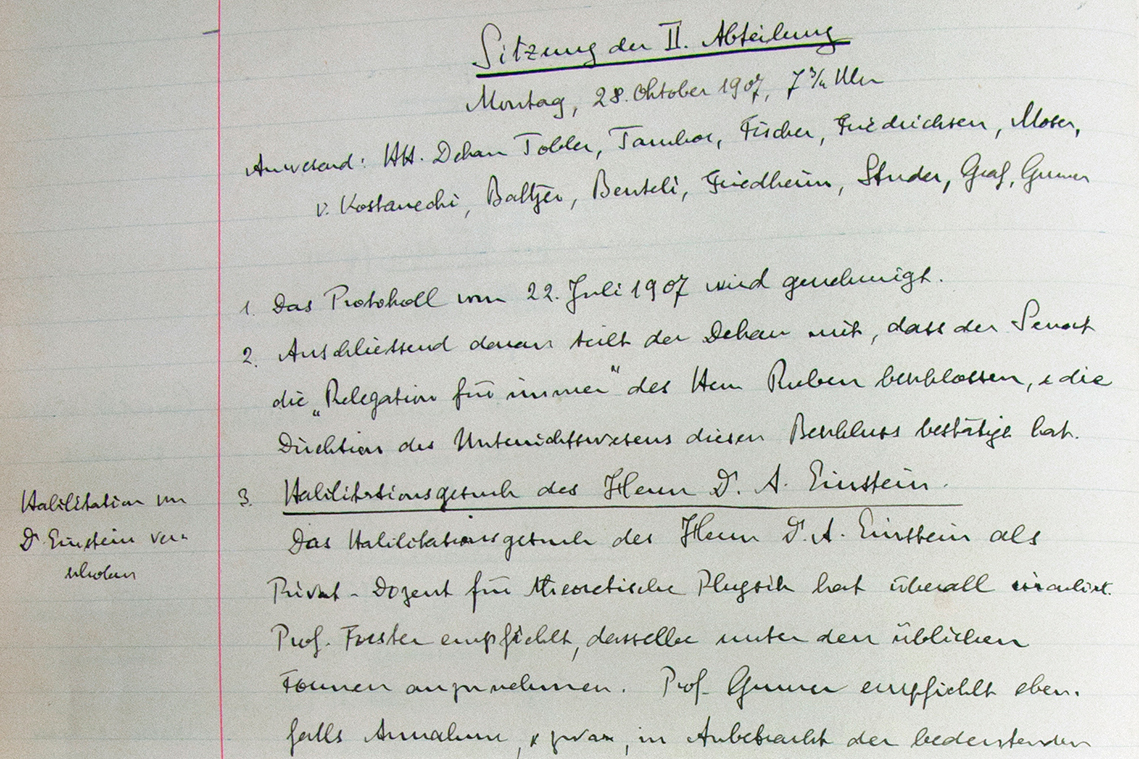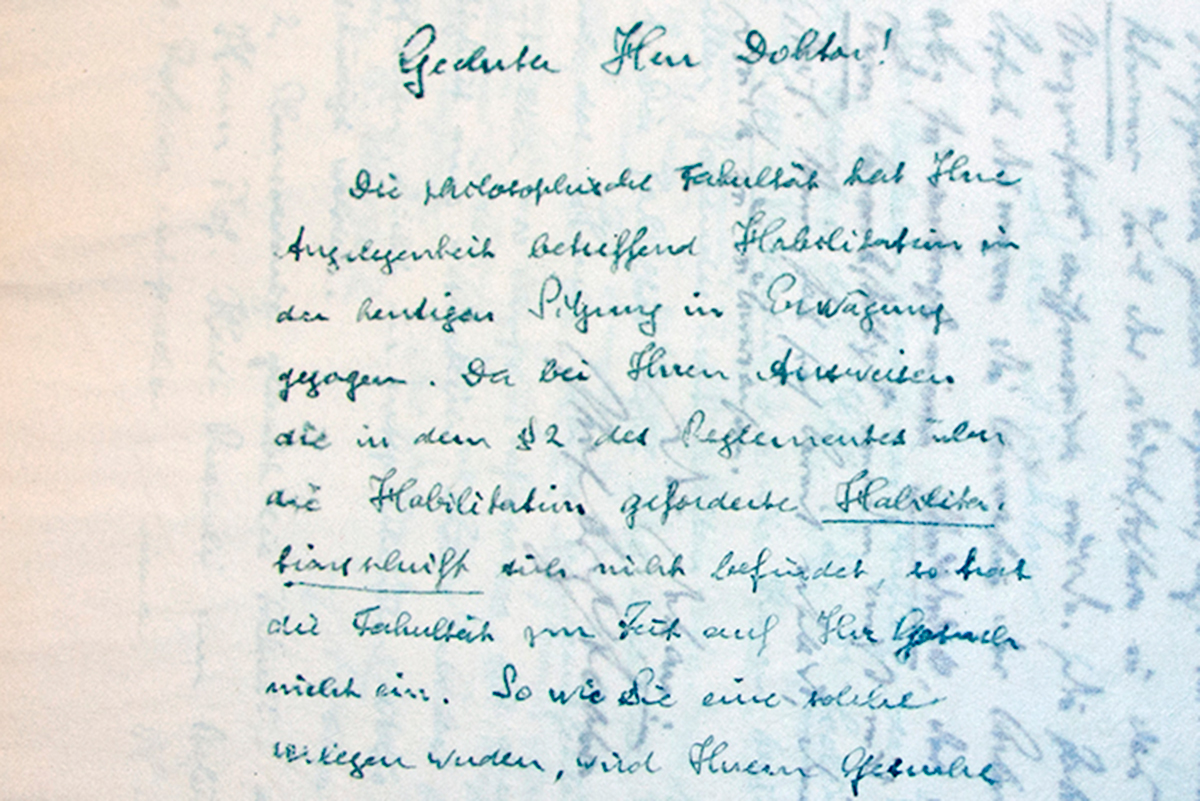The Einstein forgery
There is currently a forged letter going round on the internet. In the alleged historical writing of 1907, the University of Bern rejects Albert Einstein’s habilitation. The university archivist Niklaus Bütikofer explains which errors the forger had made and tells the true story by means of the original documents.
A yellowed letter in typewriter font, dated 6 June 1907. In the letter, there are hefty accusations which Prof Wilhelm Heinrich, dean of the Faculty of Philosophy and Natural Sciences of the University of Bern, puts to the famous physicist Albert Einstein: Einstein’s ideas on space, time and light that have become known as the theory of relativity, were "radical" and "more art than physics"; the faculty therefore had to reject his application for a habilitation in Bern. Einstein – a genius unappreciated by a bigoted academic elite?

Niklaus Bütikofer, archivist of the University of Bern, is familiar with the alleged historical document that has been spreading for a few weeks on the internet platforms Facebook and Twitter. He clarifies: "The document is a relatively crude forgery. Not much effort was put into the research." The archivist lists some errors that the author or authors of the forged letter have made:
- At the indicated date, the Faculty of Philosophy and History and the Faculty of Philosophy and Natural Sciences had not been separated yet.
- There has never been a dean – and not even a lecturer – named Wilhelm Heinrich at the University of Bern.
- The language of correspondence between Einstein who was a German native naturalised in 1901, and the university, if true, would have been in German and not in English. Bütikofer suspects that the forger obviously cannot speak any German.
- The stamp next to the signature of «Dean Heinrich» has no relationship whatsoever with the University of Bern. It seems to rather show the coat of arms of Hungary.
- The Sidlerstrasse listed in the forged letter has only existed since 1931. Before this, it was called Sternwartsstrasse, and today’s post code system also did not exist at the time.
The true story
But was the habilitation of the physicist who was living in Bern at the time initially not really rejected? This is indeed the case, not however due to scientific differences, but due to a formal deficiency. The preserved – and incidentally – handwritten correspondence that Niklaus Bütikofer found in the cantonal state archive, where the university archive files are stored, tells the following story:
On 17. June 1907, Albert Einstein submitted his application for a habilitation in Theoretical Physics to the Director for Education of the canton of Bern. The application was forwarded to the Faculty of Philosophy of the University of Bern where the members of the faculty discussed and rejected it in the sitting of 28 October 1907 – because he hadn’t submitted a habilitation thesis and not because his theories had been rejected. On the contrary: even then Einstein enjoyed a strong reputation amongst his colleagues in the field, as Paul Gruner’s application proves, Professor for Theoretical and Mathematical Physics. Because of its "major scientific accomplishments", he wanted to have Einstein habilitated, despite the lack of a thesis.
On the same day, dean Gustav Tobler responded to Einstein, that the faculty could only habilitate him once he submits the habilitation thesis at a later date. Einstein must have done this in the following months, because on 27 February 1908, he was invited for a trial lecture at the University of Bern. Subsequently, the faculty, and a short time later the Directorate of the Bernese Education granted him the teaching qualification (Venia docendi). The true story is thus far less spectacular than the one told in the forged letter.

"Joke of a bored Physics student"
Where this modern internet myth originated and who is responsible for the document is as of yet unknown. Bütikofer holds a financial motive to be unlikely, as he says "If you enlarge the photograph you can spot that it was edited in the Photoshop program. From the folds in the paper, you can also see that the typewriter font was simply copied flat onto it." The alleged letter therefore most probably does not exist as a paper document and as financially motivated forgery – there exists a lucrative market for Einstein memorabilia – it would thus be worthless.
He suspects that it this is a joke of a bored Physics student who is probably thievishly delighted that the document is being spread in social media. "To produce such fakes and to spread them as widely as possible has become a kind of competition in social media", the archivist says. "The Einstein-stamps above on the right the forger probably put on with a wink to give us an indication that the forgery is just a hoax."
About Niklaus Bütikofer

Since 2010 Niklaus Bütikofer has been the archivist of the University of Bern and a member of the management board of the Continuing Education Programme in Archival, Library and Information Sciences. He studied History and worked at the Swiss Federal archive for a long time.
Contact:
Niklaus Bütikofer
University Archivist
+41 31 631 80 84
niklaus.buetikofer@hist.unibe.ch
About the author
Martin Zimmermann works as an Editor of Corporate Communication at the University of Bern.


